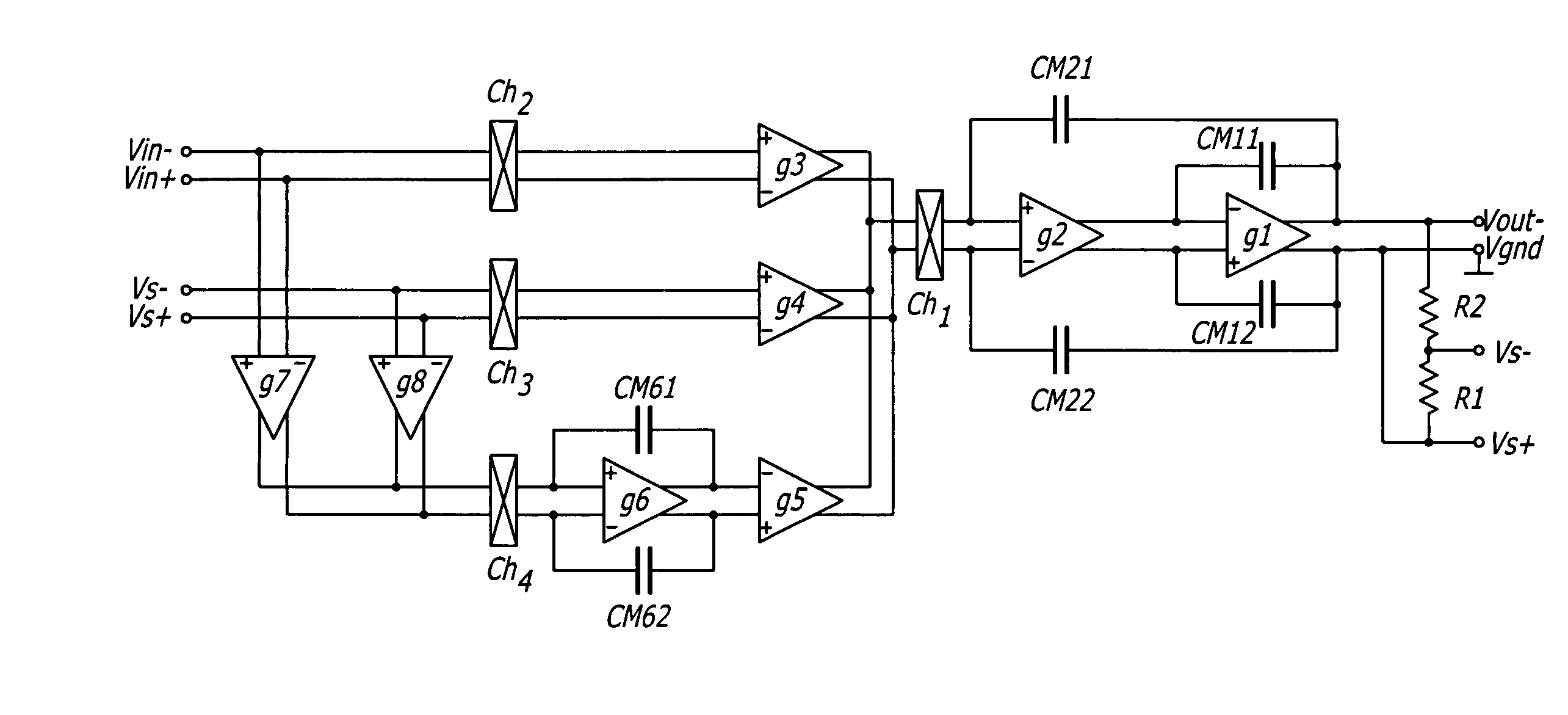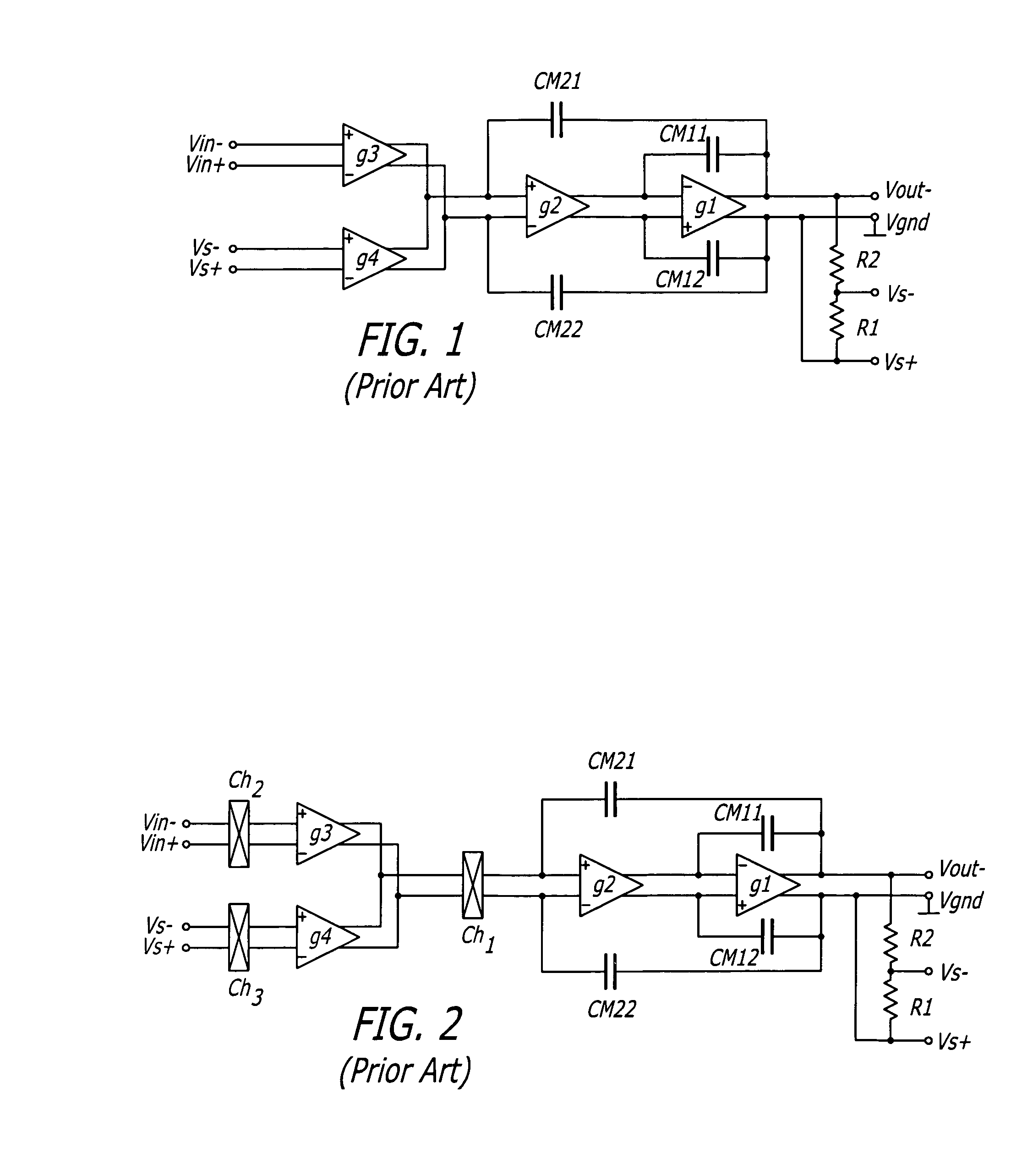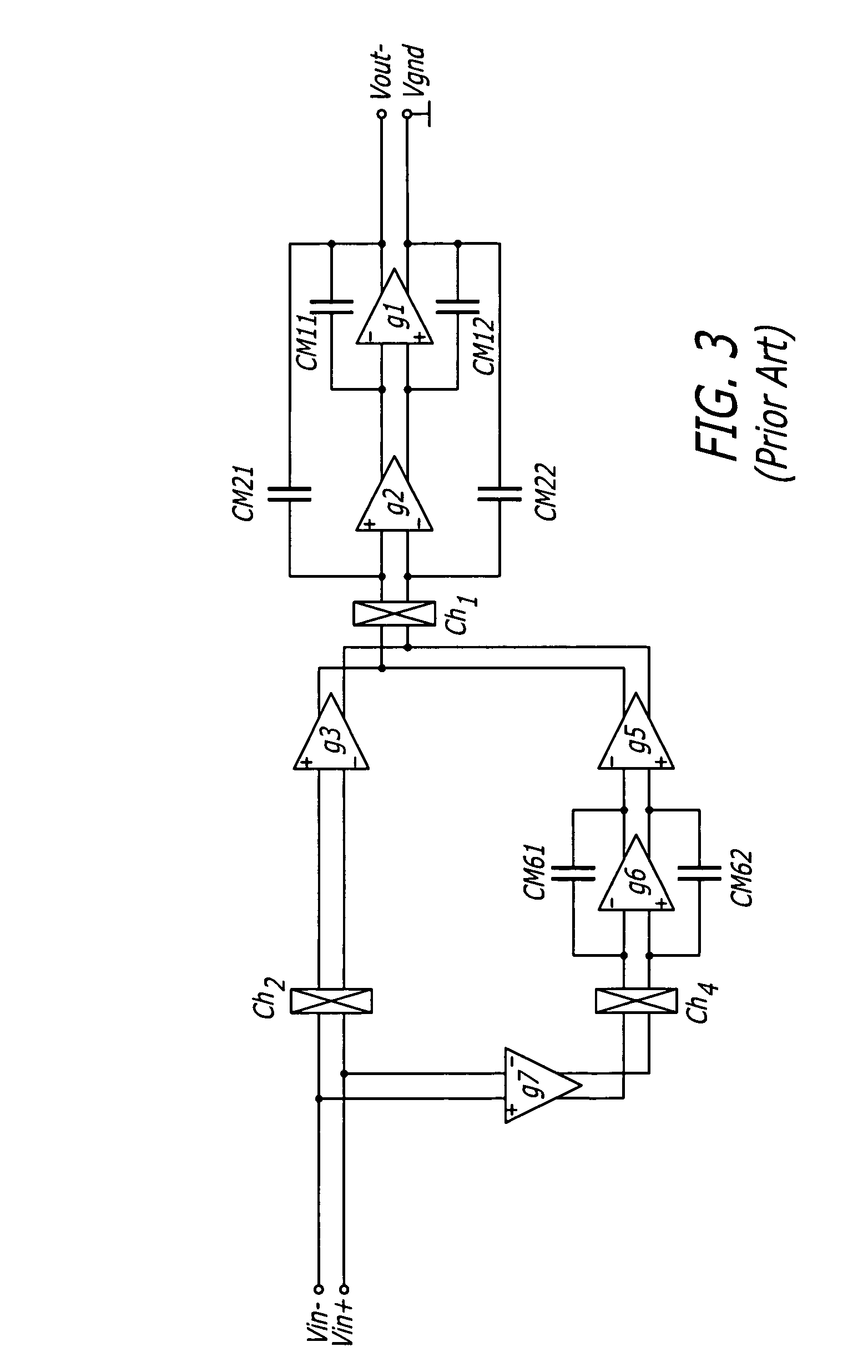Chopper chopper-stabilized instrumentation and operational amplifiers
a technology of instrumentation amplifiers and stabilizers, applied in the direction of amplifiers with semiconductor devices/discharge tubes, electronic switching, pulse techniques, etc., can solve the problems of limited common-mode rejection ratio (cmrr), inability to include the negative rail in the input voltage common-mode range, and several limitations
- Summary
- Abstract
- Description
- Claims
- Application Information
AI Technical Summary
Benefits of technology
Problems solved by technology
Method used
Image
Examples
Embodiment Construction
[0018]One embodiment of the present invention is shown in FIG. 4. The basic chopper current-feedback instrumentation amplifier of FIG. 2 is used as the main instrumentation amplifier. The voltage-to-current converter G3 senses the input signal Vin=Vin+−Vin−, while the voltage-to-current converter G4 takes the sense feedback output signal Vs=Vs+−Vs−. If G3=G4, the high loop gain of the whole amplifier forces the feedback sense voltage Vs to be equal and opposite to the input voltage Vin.
[0019]The choppers Ch1, Ch2 and Ch3 chop the offset voltage of the amplifiers G3 and G4. The chopped offset can be regarded as a square-wave interference voltage referred to the input voltage of amplifiers G3 and G4. The input voltage Vin is determined by an external source, and while generally may be a varying signal, it does not contain the square-wave signal. The high loop gain of the whole amplifier forces the feedback-sense voltage Vs to compensate the chopped input offset voltage. Therefore, thi...
PUM
 Login to View More
Login to View More Abstract
Description
Claims
Application Information
 Login to View More
Login to View More - R&D
- Intellectual Property
- Life Sciences
- Materials
- Tech Scout
- Unparalleled Data Quality
- Higher Quality Content
- 60% Fewer Hallucinations
Browse by: Latest US Patents, China's latest patents, Technical Efficacy Thesaurus, Application Domain, Technology Topic, Popular Technical Reports.
© 2025 PatSnap. All rights reserved.Legal|Privacy policy|Modern Slavery Act Transparency Statement|Sitemap|About US| Contact US: help@patsnap.com



